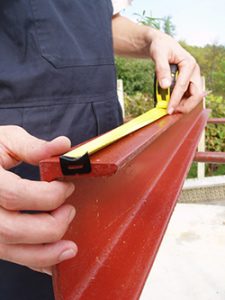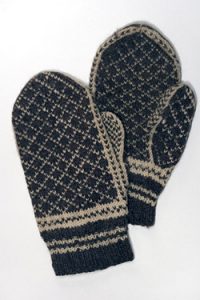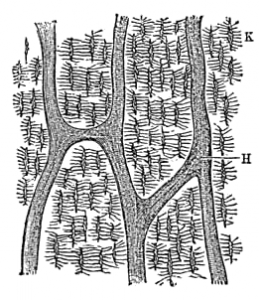Choosing Your A&P TextbookA Primary Tool for Learning
My advice is organized as a series of general principles in selecting the best A&P textbook for your course. Although this advice is based on more than three decades of teaching A&P at various levels, several years of teaching and mentoring A&P professors in a graduate training program, plus quite a bit of research into the literature of teaching and learning, they remain just one person’s take on A&P textbooks.
Read through this entire collection—or simply skip around and browse—to stimulate your thinking about the textbook you use in your A&P course.

Getting the Right Fit
The hardest part of choosing an A&P textbook is getting a good “fit” with your course. A&P textbooks intentionally come in a variety of forms, even from the same author and publisher, so that you can find one that best suits your needs. So the issue is to first determine your needs.
Assessing Your Needs
Have specified a set of course objectives and learning outcomes? If not, I recommend doing that before going any further in your quest. Use your objectives to construct a spreadsheet that lists all of them in column 1.
Next, make a list of the features of a textbook/ancillary package that you need to use (or want to use) in your course. Add each of those to column 1.
Next, make a list of activities, strategies, and approaches that characterize your course (or that you are thinking about adding or changing). For example, do you do online quizzing or testing? Do you want to? Do you use clickers (student response systems)? Add these to column 1 of your spreadsheet.
Then add to column 1 anything else you know you need or want in a textbook. Do you want a lot of illustrations? Do you like anatomical rosettes? Should the book be chunked into small chapters and sections or lumped together in larger chapters?
Once you narrow down your textbook choices (see the other bits of advice on this page), list those textbooks along the top row.
Be sure to read through the rest of the advice on this page to see what else you should add to column 1. For example, you may want to either list level (depth of coverage) in column 1 or instead use level to help you narrow down your choices for the top row.
Use Your Grid to Narrow Choices
Use this grid to tick off each item in column 1 that will be satisfied if you use the textbook listed in the first column along the top. You’ll thus be filling in column 2 with checks or Xs or perhaps a numeral on a scale of 0 to 5 (so you can score each column to see how close a fit you have for each textbook).
Now you have a visual (and perhaps numeric) way to narrow down your choices even more—with the assurance that any of them will be a reasonable fit to your course.
As you can imagine, this could be a big project. A huge project. But the more care with which this process is done, the better the end result is likely to be. So recruit a lot of colleagues to help you!

Don’t Expect a Perfect Fit
As I outline in my article Your Textbook is a Mitten, Not a Glove, there are some advantages to have the flexibility that an “off-the-shelf fit” affords. You have room to grow and your students have room to explore to satisfy their curiosity—and increase their motivation for learning.
If you really must have that perfect fit, then consider “custom tailoring” of an existing textbook that is pretty close to your needs. Most publishers will consider customizing a textbook by removing chapter or adding chapter from other of their publications. However, unless you can commit to a fairly large number of new book sales of the customized version, the price for customization could be very high. In some cases, though, it works out very well.

What’s the Right Level?
What is meant by level?
Exactly. Textbooks are often categorized by level—but what does that really mean? The level of a textbook can mean different things to different people, so when discussing “level” with colleagues, publishers, and your students, be sure that gets clarified early in the conversation.
Here are some things that level can encompass:
Is the book targeted mainly to secondary (high school), freshman/sophomore undergrad, junior/senior undergrad, strong prerequisites, weak prerequisite, graduate/professional courses?
Is this book for a one-semester A&P course, or a 2-semester A&P sequence?
Is this book for a course that will likely be a professional student’s sole exposure to anatomy and/or physiology—or will later courses add additional layers of anatomy and/or physiology mastery?
Is the book’s reading level accessible to all learners in your course?
Is the book broad in its coverage or narrow in its coverage?
Is the book for pre-professional health professions, or bio majors, or non-science majors?
Or it could include something else. That’s why the term level can be so misleading—and why that must be clarified at the start of any textbook conversation.
What If I Subscribe to the “Less Is More” Philosophy?
Great! Me, too. But when we adopt a less-is-more approach that does not mean we need to strip away all information that is not at the core of where we want students to focus their learning activity.
Less-is-more is often executed as a process of going deeper into fewer topics, rather than an overall reduction of coverage in a course. The aim of this is to provide the level of understanding and self-learning skills needed to also master the topics that were not the focus of the course. In this case, having a textbook that includes extra topics is useful to students as they eventually expand from less to more on their own (or in later courses and in the clinic).
Remember, students will not necessarily be remembering every detailed fact or concept in a textbook. But they need that extra coverage at some point in their learning to give context to the parts on which they do focus. Learning science tells us that a list of facts without such context is not nearly has helpful to students.
My advice is to find a textbook that has a bit more than your students really need—but not so much that the extra coverage will confuse and distract them from the core topics.

Ask Around
Sometimes, you can easily narrow your textbook choices by discussions with colleagues using a variety of different textbooks. Of course, you’ll be filtering what you learn based on your own course characteristics, but such discussions can give you insights you may miss on your own.
But be careful—anecdotal stories can be misleading. Perhaps the textbook that three colleagues at other colleges really don’t like will turn out to be the perfect fit for you. Just like those reviews on Amazon, good or bad reviews may be affected by which edition they looked at, focusing on a particular characteristic in an imbalanced manner, or whether they thought the publisher’s rep was nice to them on a particular day.
Don’t forget to have regular chats with the professors who see your students later in their programs. Check in with the nursing and health professions faculty to see what concepts with which they expect their incoming students to be familiar—and the concepts that should have been mastered already.

What Is the Purpose Of a Textbook?
It’s obvious, right? It’s a book that has all the information needed for a student to learn in the course. Yeah, that’s true. But it’s not a complete answer, so it’s therefore not always a useful answer. By thinking about how a textbook can be used by students, we can make better decisions about which textbook fits our course best.
Textbook as Course Content
The textbooks selected for a course can serve as the main repository of the facts and explanation—including tables, diagrams, photos, and other illustrations—needed for your course. As mentioned above, it can also give additional context to the core concepts learned in your course. This is a primary and effective use of textbooks.
Textbook as Learning Guide
All the A&P textbooks I’ve seen (and I’ve seen a lot) include some learning activities and tips for students. It’s my opinion that many students—and most instructors—don’t really pay much (if any) attention to these “extras.” The thinking is that the sole purpose of a textbook is that covered in the previous paragraph—a content repository. That’s too bad, because textbooks can also be a powerful guide to help students learn effectively.
I suggest taking some time to learn about current theories in learning science. Check out my reading recommendations and my various blogs in the main menu of this website to get started. Then think about what your textbook can do to contribute to learning in your course. What formats, features, and ancillaries may best help your students succeed?
Then think about ways to encourage your students to actually use all those learning tools—rather than “just skip that extra stuff.”
Textbook as Reference Manual
I always encourage my students to keep their textbooks after the A&P course is over. Many want to sell their textbooks for some quick cash. They say it’s to buy new textbooks for the next semester, but my informal polling leads me to believe it’s mostly going to next weekend’s entertainment. Regardless, I have frequently had former students stop me on the sidewalk to tell me how much they regret ignoring my advice and selling their books—which they now find are sorely needed during their nursing courses, clinical experiences, or whatever. That’s because the A&P textbook continues its service long after the A&P course has ended—now serving as a reference manual.
One could argue that in today’s world, such reference information can be easily called up on the internet. Which is true. But only in a limited way. For those who want to refresh their memories from a familiar source—to relearn what they’ve lost or never fully grasped—their trusty old A&P book is really the best tool. Learning science tells us that such forgetting and relearning cycles are the best (perhaps the only) way to learn deeply and for the long term.

Do I Even Need a Textbook for My Course?
The short answer is YES. The longer answer involves the fact that the textbook contains a huge collection of both information and learning tools that you cannot sustainably provide in your course on your own.
You may be able to create and maintain a fairly inclusive outline of information and perhaps a few effective learning tools on your own. And these may do a lot toward helping your students learn A&P enough to get by. But can you really provide all the context and background information that helps students deeply understand those central, pared-back concepts? Can you reliably stay up to date in all the topics of an A&P course, and keep your course information up to date as well—completely on your own? Without external editors and reviewers, can you be sure your course material is accurate, readable, and with minimal conceptual, stylistic, or typographical error?
Although you may be able to provide a consistent voice and vision across all your home-grown course material (much less so if you are stitching it together from outside sources), you are not likely to provide students with a consistent set of illustrations to accompany the text. Inconsistent style and approach to the thousands of illustrations students need to learn A&P will increase their cognitive load in a way that impedes efficient learning—and it introduces unnecessary confusion and misconceptions.

Textbook Formats
Textbooks are now usually available in a variety of formats. Here’s a quick look at a few of the most popular.
Hardbound
The classic hardbound textbook is usually the most expensive option, but the extra expense may be worth it for some students. As mentioned in another section of this page, A&P textbooks (more so than a history textbook, for example) are frequently used for many years beyond the the end of the A&P course. Thus, the resistance to wear and tear afforded by a hardbound book may be attractive. If a student does plan to sell their book after the course ends, the hardbound version carries the same benefit of resisting wear and tear—possibly giving a slightly better buy-back bounty.
Binder-Ready
A binder-ready version is a unbound, loose-leaf version that has been punched with three holes for easy placement into a standard 3-ring binder. Besides usually being a bit less expensive than the hardbound version, it offers a great deal of flexibility. My students who use the binder-ready version like to put each (of six) units of the book into separate binders so that they can carry a much lighter load to class, to the library, and to their study groups. not to mention the load on their arms or laps as they read and study.
Some of my students also keep their glossary, index, and other ancillaries handy this way—either moving it from one unit binder to the next and the course progresses, or by also carrying the “extras” in a separate, thinner binder. Some students interleave their notes, lab work, tests, concept maps, and other work with the textbook chapter in each unit binder—thus forming a comprehensive learning and reference tool. These sets of binders can be kept for later reference after the course ends.
A downside of using the binder-ready version is that if a student does want to sell their book, it may be more difficult to do so. Many book buyers don’t trust the completeness of a loose-leaf used book.
Digital Book
Although this format has yet to become dominant among A&P students, I think its time will be here very soon. A digital textbook is often less expensive than other formats. Today’s digital formats and devices—even very basic devices—usually provide a satisfactory reading and raiding experience (even compared to paper textbooks). Some advantages of digital books include the ability to quickly search for all instances of a concept (even more thoroughly than when using an index), making notes and highlights in the book (and sharing these with other students, ability to use note and highlights created by the course instructor, ability to cut and paste text and illustrations in to their study notes, easily transportable, and much more.
Although I realize that college students at the moment I write this embrace paper books more than digital books—and A&P will surely be one of the last holdouts in this regard—the time is dawning when all those middle-school and high-school students now doing most of their work in a digital environment will be entering our courses. And they will prefer—perhaps demand—digital textbooks. I’m just sayin’
Personal Choices
In many cases, instructors need not chose a single format for their course. For many years, I listed all three formats (hardbound, binder-ready, digital) in my book order. I requested that the bookstore feature, or recommend, the binder-ready version because I knew from experience that this had been the most popular and most satisfactory choice for students over the years.

Should I Choose an Open Access Textbook?
Although the idea of avoiding the high cost of purchasing or renting a textbook is very attractive, it is often not the best choice for an A&P textbook. Reduced student financial burdens is certainly a worthy endeavor, but sacrificing actual learning may not be a good trade-off.
Open access textbooks are often either developed with grant funding or by crowd-sourcing (like Wikipedia)—or both. With either approach, it is questionable whether the consistent voice and vision needed for solid learning can be maintained over the years.
Some open-access textbooks may not have the teacher support that you may need now or in the future. For example, if you have a student requiring special accommodations, will the open source be able to help you?
Another question to consider is how updates and revisions are handled. How frequently do they occur? Might they occur on an ongoing basis or in the middle of a semester? How does the frequency/timing affect you and your students? Will you be informed of what changes are made?

Publisher Reps
Publisher representatives are not just sales people—they are educational resource consultants. Besides having talked about the issues faced by hundreds of other A&P professionals like you, they have the training and knowledge to help you ask the right questions and help you get the answers you need. They can offer solutions that you many not have considered.
Free Consulting Service
The advice given by publisher’s representatives is biased, of course. But that won’t change the fact that they can offer information and alternatives that you will not have available to you. And they are free of charge—so why not use this free service!
A word of warning: you’ll likely be influenced by who brings you the tastiest cookies or best remembers your children’s names, rather than the textbook resources and services offered. Check your textbook needs grid (see above)—are donuts really listed there as a need? I didn’t think so.
Ask Questions
Asking questions and challenging publisher claims is a great way to get the best information for making a good textbook adoption decision. So write down questions as they occur to you, then pass them along to the reps.
As an author, I love it when users or potential users of my textbooks ask me questions about why I’ve made the choices I’ve made in the content and design of my textbooks. So ask your rep if they can put you in touch with authors for whom you have such questions. It’s part of their job to help you do this.
Last updated: February 6, 2021 at 11:37 am
🏅 NOTE: TAPP ed badges and certificates can be claimed until the end of 2025. After that, they remain valid, but no additional credentials can be claimed. This results from the free tier of Canvas Credentials shutting down (and lowest paid tier is far, far away from a cost-effective rate for our level of usage). For more information, visit TAPP ed at theAPprofessor.org/education
